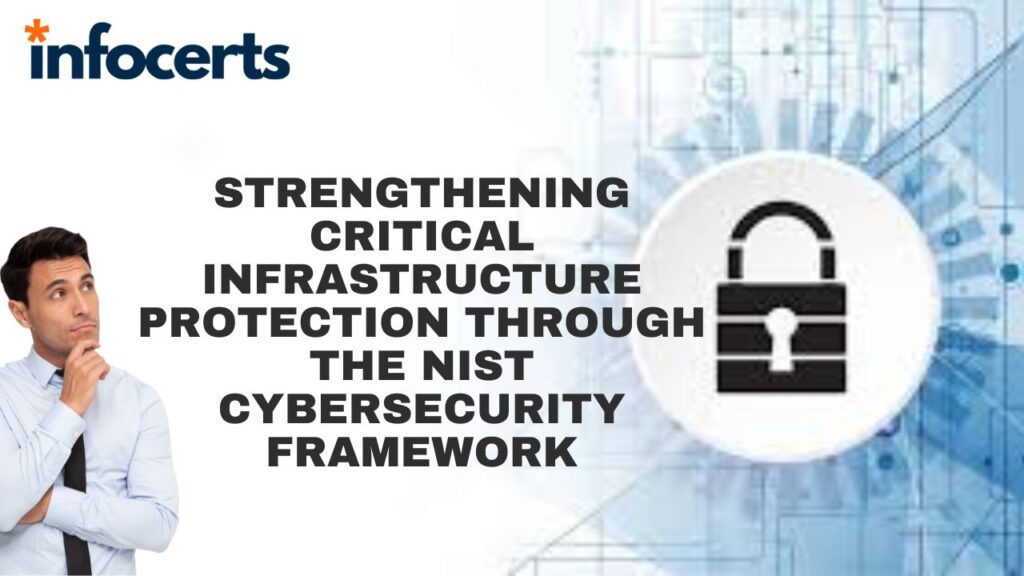Introduction: In today’s interconnected world, ensuring the security and resilience of critical infrastructure is of paramount importance. The NIST Cybersecurity Framework (CSF) provides a robust framework that organizations can leverage to strengthen their cybersecurity posture and safeguard critical infrastructure. This blog post explores the application of the NIST CSF Critical Infrastructure protection and highlights its key benefits.
- Identify: The first step in the NIST CSF Critical Infrastructure systems, assets, and their vulnerabilities. By conducting a comprehensive risk assessment, organizations can gain insights into potential threats and their potential impact. This information enables them to prioritize resources and allocate them effectively to protect critical infrastructure components.
- Protect: The Protect function of the NIST CSF focuses on implementing safeguards to mitigate risks. Critical infrastructure operators can leverage this function to establish robust access controls, implement encryption, conduct regular patch management, and deploy Intrusion Detection and prevention systems. These measures help fortify the security of critical systems, making them more resilient against cyber threats.
- Detect: Detecting cyber threats in a timely manner is crucial to minimizing potential damage. Organizations can employ advanced threat monitoring and detection technologies to identify and respond to security incidents promptly. Implementing continuous monitoring systems, security information, and event management (SIEM) solutions, and real-time threat intelligence feeds can significantly enhance the detection capabilities.
- Respond: In the event of a cyber incident, having an effective response plan is essential. The NIST CSF recommends developing an incident response plan that outlines roles, responsibilities, and procedures to follow during an incident. This enables organizations to respond swiftly, mitigate the impact, and restore critical infrastructure operations promptly.
- Recover: The final stage of the NIST CSF focuses on restoring operations and systems to a secure state following an incident. By implementing resilient backup and recovery mechanisms, organizations can quickly recover critical infrastructure services. Regular testing and updating of recovery plans ensure that they remain effective and up-to-date.
| NIST CSF Function | Description | Application to Critical Infrastructure Protection |
| Identify | Identify critical infrastructure systems, assets, and vulnerabilities through risk assessment. | Conduct a risk assessment to determine potential threats and vulnerabilities to critical infrastructure components. |
| Protect | Implement safeguards to mitigate risks. | Establish access controls, encryption, patch management, and intrusion detection systems to protect critical infrastructure systems. |
| Detect | Timely detection of cyber threats. | Employ threat monitoring, real-time threat intelligence, and security information and event management (SIEM) solutions to detect and respond to security incidents. |
| Respond | Develop an incident response plan to effectively respond to cyber incidents. | Create an incident response plan that outlines roles, responsibilities, and procedures to follow during an incident, ensuring swift and efficient response and mitigation of the impact. |
| Recover | Restore operations and systems to a secure state following an incident. | Implement resilient backup and recovery mechanisms to quickly recover critical infrastructure services, and regularly test and update recovery plans to ensure their effectiveness. |
Conclusion: Protecting critical infrastructure from cyber threats is a pressing concern. The NIST CSF provides a flexible and comprehensive framework that enables organizations to identify, protect, detect, respond to, and recover from cybersecurity risks effectively. By adopting this framework, critical infrastructure operators can enhance their cybersecurity posture, reduce vulnerabilities, and ensure the security and resilience of our critical systems, contributing to the overall safety and stability of our society.
FAQs
- What is the NIST Cybersecurity Framework?
- How does the NIST Cybersecurity Framework apply to critical infrastructure protection?
- What are the benefits of applying the NIST Cybersecurity Framework to critical infrastructure protection?
- What are some examples of protective measures recommended by the NIST Cybersecurity Framework for critical infrastructure protection?
- How does the NIST Cybersecurity Framework contribute to the overall safety and stability of society?
——————————————————————————————————————–
Infocerts, 5B 306 Riverside Greens, Panvel, Raigad 410206 Maharashtra, India
Contact us – https://www.infocerts.com

